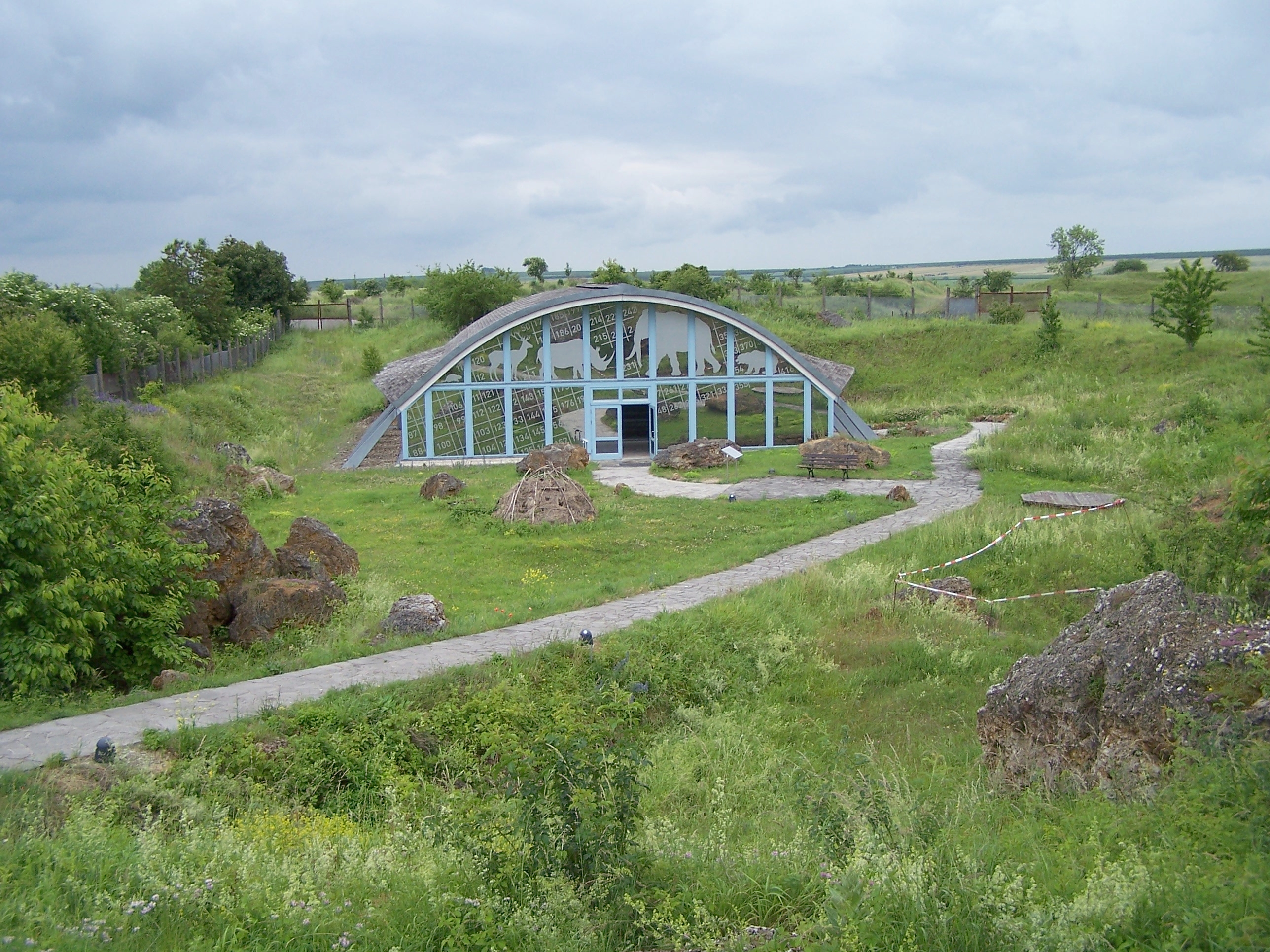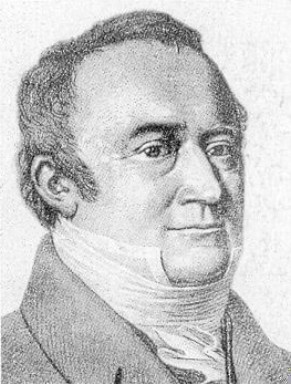|
Bilzingsleben (Paleolithic Site)
Bilzingsleben (, lit. ''discovery site Bilzingsleben'') is a former stone quarry in Thuringia, Germany, notable for its wealth of palaeolithic human fossils and artifacts. One of the oldest buildings in the world and one of the oldest pieces of art were found at the site. Geology Bilzingsleben is located on the northern border of the Thuringian Basin, a depression made of triassic Keuper. To the North are the Kyffhäuser mountains, Hainleite and Schmücke that contain mainly Bunter sandstone and Muschelkalk deposits. The regions are separated by the local ''hercynian'' fault-line (Finne-Störung). The fault-line is the cause for numerous springs in this area. The emerging spring waters in turn have dissolved the local calcareous rocks and formed the interglacial travertine deposits that cover the Bilzingsleben site. The 400.000 year long conservation is attributed to the travertine's remarkable resilience to erosional processes. The site itself was part of a fluvial terrac ... [...More Info...] [...Related Items...] OR: [Wikipedia] [Google] [Baidu] |
Calcareous
Calcareous () is an adjective meaning "mostly or partly composed of calcium carbonate", in other words, containing lime (mineral), lime or being chalky. The term is used in a wide variety of Science, scientific disciplines. In zoology ''Calcareous'' is used as an adjectival term applied to anatomical structures which are made primarily of calcium carbonate, in animals such as gastropods, i.e., snails, specifically in relation to such structures as the operculum (gastropod), operculum, the clausilium, and the love dart. The term also applies to the calcium carbonate Test (biology), tests of, often, more-or-less microscopic Foraminifera. Not all tests are calcareous; diatoms and radiolaria have siliceous tests. The molluscs are calcareous organisms, as are the Calcarea, calcareous sponges (Calcarea), that have spicules which are made of calcium carbonate. Additionally, reef-building corals, or Scleractinia, are calcareous organisms that form their rigid skeletal structure th ... [...More Info...] [...Related Items...] OR: [Wikipedia] [Google] [Baidu] |
Reinsdorf Interglacial , sports teams owner
{{disambiguation ...
Reinsdorf may refer to: * Reinsdorf, Saxony-Anhalt, a municipality in the district Burgenlandkreis, Saxony-Anhalt, Germany * Reinsdorf, Saxony, a municipality in the district Zwickauer Land, Saxony, Germany * Reinsdorf, Thuringia, a municipality in the district Kyffhäuserkreis, Thuringia, Germany * August Reinsdorf, German anarchist * Jerry Reinsdorf Jerry Michael Reinsdorf (born February 25, 1936) is an American sports executive and businessman who is the owner of the NBA's Chicago Bulls and MLB's Chicago White Sox. He started his professional life as a tax attorney with the Internal Re ... [...More Info...] [...Related Items...] OR: [Wikipedia] [Google] [Baidu] |
Halle State Museum Of Prehistory
The State Museum of Prehistory (''Landesmuseum für Vorgeschichte'') in Halle (Saale) is the archaeological museum of the German state of Saxony-Anhalt. Founded in Naumburg in 1819, it was moved to Halle in 1825, and within Halle to its present location in 1918. Its collection, comprising more than 15 million items, is among the most extensive and important in Germany. Among its most famous exhibits are the Nebra sky disk ( Unetice culture), which has been part of the permanent exhibition since 2008, the Eulau family graves (Corded Ware culture) and the Hornhausen rider stone (Francia). It also houses the Mesolithic burial of a woman known as the Bad Dürrenberg shaman. History The Museum was founded by the ''Thüringisch-Sächsischer Verein für Erforschung des vaterländischen Alterthums und Erhaltung seiner Denkmale'' in Naumburg Naumburg () is a town in (and the administrative capital of) the district Burgenlandkreis, in the state of Saxony-Anhalt, Central Germany ... [...More Info...] [...Related Items...] OR: [Wikipedia] [Google] [Baidu] |
Fossil
A fossil (from Classical Latin , ) is any preserved remains, impression, or trace of any once-living thing from a past geological age. Examples include bones, shells, exoskeletons, stone imprints of animals or microbes, objects preserved in amber, hair, petrified wood and DNA remnants. The totality of fossils is known as the ''fossil record''. Though the fossil record is incomplete, numerous studies have demonstrated that there is enough information available to give a good understanding of the pattern of diversification of life on Earth. In addition, the record can predict and fill gaps such as the discovery of '' Tiktaalik'' in the arctic of Canada. Paleontology includes the study of fossils: their age, method of formation, and evolutionary significance. Specimens are sometimes considered to be fossils if they are over 10,000 years old. The oldest fossils are around 3.48 billion years to 4.1 billion years old. Early edition, published online before prin ... [...More Info...] [...Related Items...] OR: [Wikipedia] [Google] [Baidu] |
University Of Jena
The University of Jena, officially the Friedrich Schiller University Jena (, abbreviated FSU, shortened form ''Uni Jena''), is a public research university located in Jena, Thuringia, Germany. The university was established in 1558 and is counted among the ten oldest universities in Germany. It is affiliated with six Nobel Prize winners, most recently in 2000 when Jena graduate Herbert Kroemer won the Nobel Prize for physics. It was renamed after the poet Friedrich Schiller who was teaching as professor of philosophy when Jena attracted some of the most influential minds at the turn of the 19th century. With Karl Leonhard Reinhold, Johann Gottlieb Fichte, G. W. F. Hegel, F. W. J. Schelling and Friedrich Schlegel on its teaching staff, the university was at the centre of the emergence of German idealism and early Romanticism. , the university has around 19,000 students enrolled and 375 professors. Its current president, Walter Rosenthal, has held the role since 2014. Hi ... [...More Info...] [...Related Items...] OR: [Wikipedia] [Google] [Baidu] |
Flint
Flint, occasionally flintstone, is a sedimentary cryptocrystalline form of the mineral quartz, categorized as the variety of chert that occurs in chalk or marly limestone. Historically, flint was widely used to make stone tools and start fires. Flint occurs chiefly as nodules and masses in sedimentary rocks, such as chalks and limestones.''The Flints from Portsdown Hill'' Inside the nodule, flint is usually dark grey or black, green, white, or brown in colour, and has a glassy or waxy appearance. A thin, oxidised layer on the outside of the nodules is usually different in colour, typically white and rough in texture. The nodules can often be found along s and [...More Info...] [...Related Items...] OR: [Wikipedia] [Google] [Baidu] |
University Of Halle-Wittenberg
Martin Luther University Halle-Wittenberg (), also referred to as MLU, is a public research university in the cities of Halle and Wittenberg. It is the largest and oldest university in the German state of Saxony-Anhalt. MLU offers German and international (English) courses leading to academic degrees such as BA, BSc, MA, MSc, doctoral degrees, and habilitation. The university was created in 1817 through the merger of the University of Wittenberg (founded in 1502) and the University of Halle (founded in 1694). MLU is named after Protestant reformer Martin Luther, who was a professor in Wittenberg. Today, the university campus is located in Halle, while ''Leucorea Foundation'' in Wittenberg serves as MLU's convention centre. History University of Wittenberg (''Universität Wittenberg'') was founded in 1502 by Frederick the Wise, Elector of Saxony to propagate the principles of Renaissance humanism. The foundation of the university was heavily criticized, especially wh ... [...More Info...] [...Related Items...] OR: [Wikipedia] [Google] [Baidu] |
Concretions
A concretion is a hard and compact mass formed by the precipitation of mineral cement within the spaces between particles, and is found in sedimentary rock or soil. Concretions are often ovoid or spherical in shape, although irregular shapes also occur. The word ''concretion'' is borrowed from Latin , itself derived from ''concrescere'' , from ''con-'' and ''crescere'' . Concretions form within layers of sedimentary Stratum, strata that have already been deposited. They usually form early in the burial history of the sediment, before the rest of the sediment is hardened into rock. This concretionary cement often makes the concretion harder and more resistant to weathering than the host stratum. There is an important distinction to draw between concretions and Nodule (geology), nodules. Concretions are formed from mineral precipitation around some kind of nucleus while a nodule is a replacement body. Descriptions dating from the 18th century attest to the fact that concreti ... [...More Info...] [...Related Items...] OR: [Wikipedia] [Google] [Baidu] |
Calcium Carbonate
Calcium carbonate is a chemical compound with the chemical formula . It is a common substance found in Rock (geology), rocks as the minerals calcite and aragonite, most notably in chalk and limestone, eggshells, gastropod shells, shellfish skeletons and pearls. Materials containing much calcium carbonate or resembling it are described as calcareous. Calcium carbonate is the active ingredient in agricultural lime and is produced when calcium ions in hard water react with carbonate ions to form limescale. It has medical use as a calcium supplement or as an antacid, but excessive consumption can be hazardous and cause hypercalcemia and digestive issues. Chemistry Calcium carbonate shares the typical properties of other carbonates. Notably, it: *reacts with acids, releasing carbonic acid which quickly disintegrates into carbon dioxide and water: : *releases carbon dioxide upon heating, called a thermal decomposition reaction, or calcination (to above 840 °C in the case of ), t ... [...More Info...] [...Related Items...] OR: [Wikipedia] [Google] [Baidu] |
Ernst Friedrich, Baron Von Schlotheim
Ernst Friedrich, Freiherr von Schlotheim (2 April 176428 March 1832), German palaeontologist and politician, was born in Allmenshausen, Schwarzburg-Sondershausen. He was Privy Councillor and President of the Chamber at the court of Gotha. Becoming interested in geology he gathered a very extensive collection of fossils. In 1804 he published descriptions and illustrations of remarkable remains of (Carboniferous) plants, ''Ein Beitrag zur Flora der Vorwelt''. His more important work was entitled ''Die Petrefactenkunde'' (1820). In this he incorporated the plates used in his previous memoir and supplemented it by a folio atlas (1822), in which he illustrated his collection of petrified and fossil remains of the animal and vegetable kingdom of a former world. For the first time in Germany the fossils were named according to the binomial system of Linnaeus. His specimens are preserved in the Berlin Museum. He died at Gotha Gotha () is the fifth-largest city in Thuringia, German ... [...More Info...] [...Related Items...] OR: [Wikipedia] [Google] [Baidu] |
Fossil
A fossil (from Classical Latin , ) is any preserved remains, impression, or trace of any once-living thing from a past geological age. Examples include bones, shells, exoskeletons, stone imprints of animals or microbes, objects preserved in amber, hair, petrified wood and DNA remnants. The totality of fossils is known as the ''fossil record''. Though the fossil record is incomplete, numerous studies have demonstrated that there is enough information available to give a good understanding of the pattern of diversification of life on Earth. In addition, the record can predict and fill gaps such as the discovery of '' Tiktaalik'' in the arctic of Canada. Paleontology includes the study of fossils: their age, method of formation, and evolutionary significance. Specimens are sometimes considered to be fossils if they are over 10,000 years old. The oldest fossils are around 3.48 billion years to 4.1 billion years old. Early edition, published online before prin ... [...More Info...] [...Related Items...] OR: [Wikipedia] [Google] [Baidu] |









